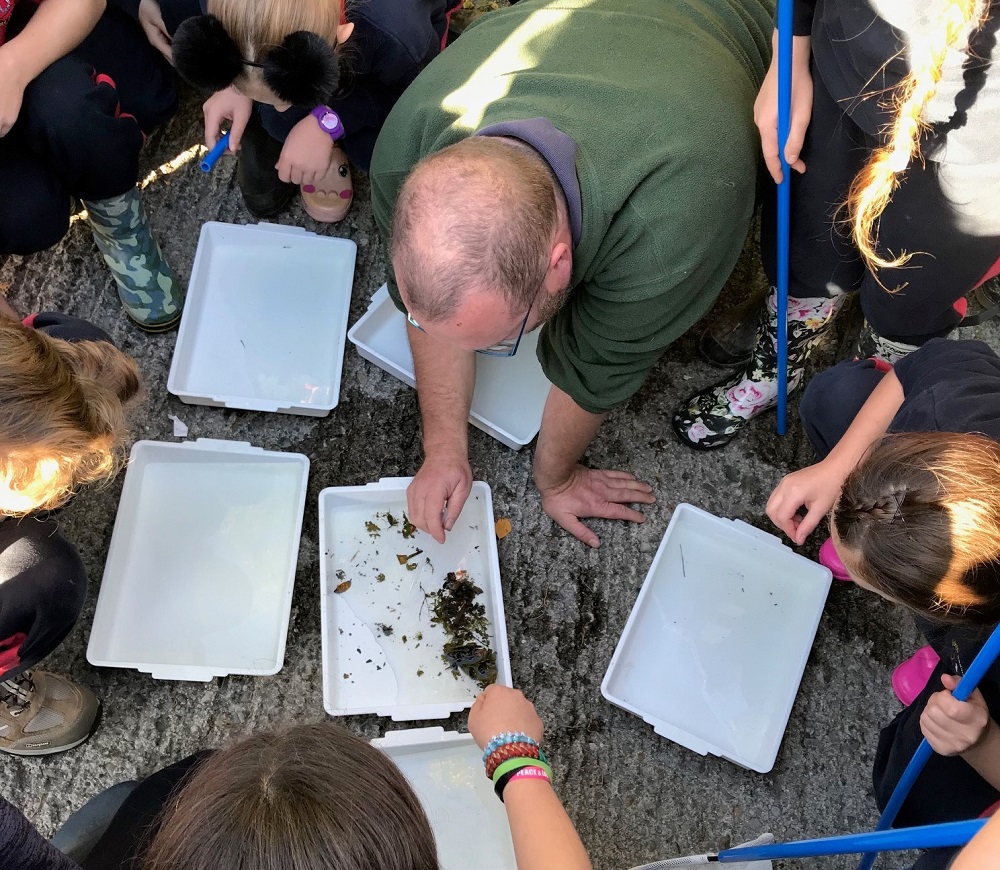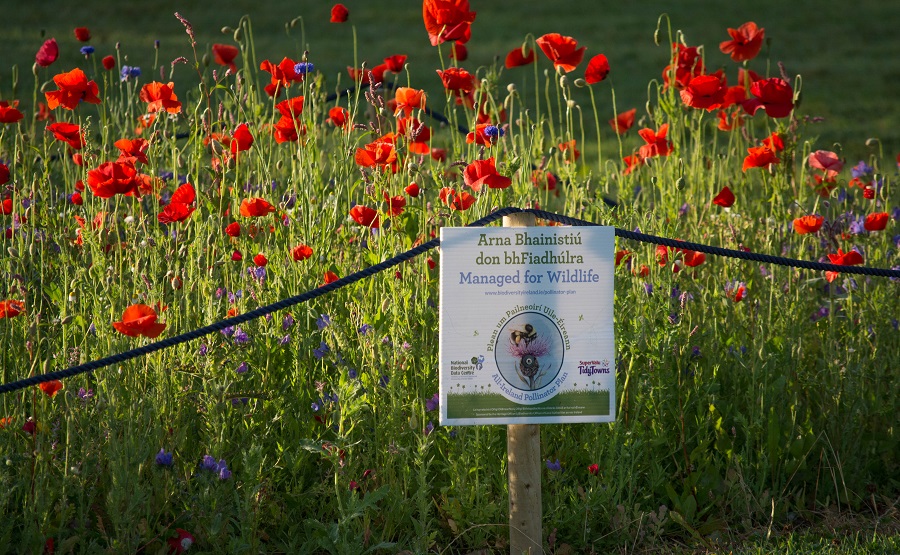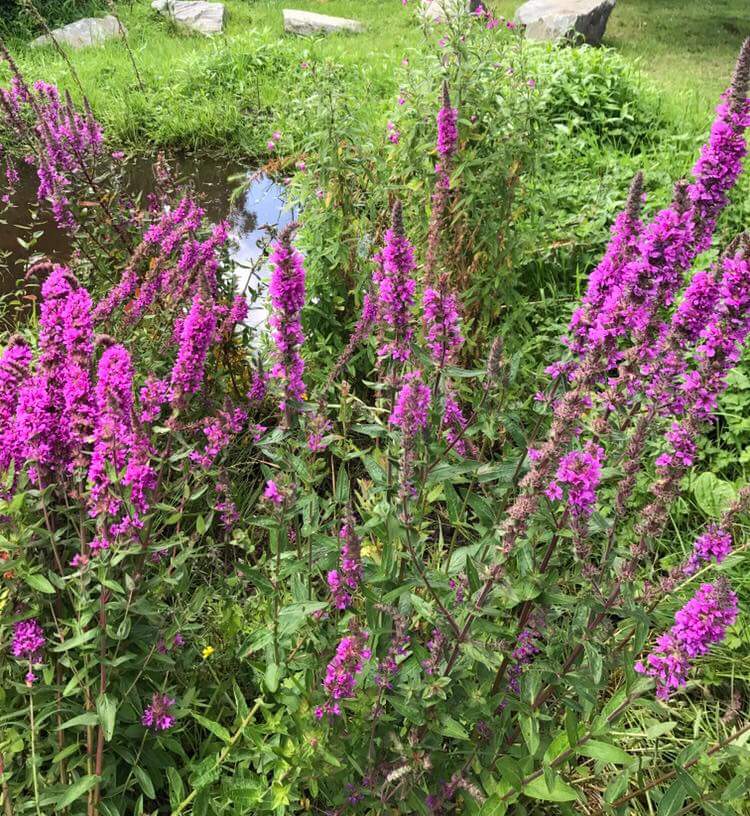
Category A – (Small community group project, run on less than €3,000 budget)
Scroll down the page to learn about the six projects shortlisted in this category

Community Group: Baile Slachtmhar Bhéal an Mhuirthead

Our aim is to create more awareness of the wealth of biodiversity in our area, to make people aware of the threats to biodiversity and how to reduce/eliminate these threats and to guide farmers, gardeners, accommodation providers, and tourism product providers in the direction of best practice and eco-tourism, and so create a more sustainable future for both residents and wildlife on the Mullet Peninsula.
During the past year we have:
The positive biodiversity impact of the project
Community Group: Balla Community Tidy Towns, Community Resource Centre, Balla, Co Mayo.

We first developed a Community Garden and Edible Trail and the feedback and community reaction was so positive we decided to go further and develop a Community Orchard and Biodiversity Garden.
A Community Orchard provides a way for people to come out, plant a fruit tree and in so doing connect with neighbours while caring for the environment. “The best time to plant a tree was 20 years ago. The second best time to plant a tree is today” is a Chinese proverb. The Community Orchard connects communities through the planting of fruit trees in public places and these trees provide free fruit as well as greenery to urban environments while ‘reclaiming’ unused common land for use by the community.
The more people who use and engage with a Community Orchard – the more likely they are to treat the space with respect and get involved in its maintenance. For some people it may be an exciting volunteer project to get involved in, for others the beautiful garden that they never had, for others a place to let the kids play, or a slightly less public place for young people to meet and have a laugh.
A wildlife area is being developed at the back of the Biodiversity Garden where we have piled deadwood and cut-offs, developed sand & soil banks as bee beds and a bee hotel as well as bird feeders and nesting boxes. It is already evident that this project is attracting insects, birds and wildlife and the project has created a renewed interest in nature and wildlife within the community.
The positive biodiversity impact of the work
Our project was also responsible for encouraging the following developments.
Because of the increased awareness of the importance of Biodiversity as a result of our project we decide to do a clean-up on our local river and removed 22 bags of refuse from the river. This has resulted in a new ‘Balla River Awareness Project’ in conjunction with Mick Kane Community Water Officer, Mayo county Council and South West Mayo Development Company which will involve the community, the local schools and the Foroige Club.
We have developed a draft Biodiversity Plan for Balla and we are happy that the development of this plan will inform us on local Nature and Biodiversity in the coming years. Balla is extremely rich when it comes to Nature and Biodiversity, with the community owned Balla Town Parks as well as other areas with a variety of Flora and Fauna and our aim now is to make these as accessible as possible by creating greenways, footpaths and woodland walks.
The new Neighbourwood Woodlands Walks has greatly enhanced the Town Parks as a wildlife Habitat and it is only now that members of the community are coming to realise the abundance of treasures they have on their doorstep. The bird boxes and bug hotel are attracting visitors and we carried out a survey of Nesting Boxes this year with Balla Secondary School in consultation with Birdwatch Ireland, in order to quantify their use and we hope to expand this next year.
The increased numbers of young families walking in the park and with other events like our recent ‘Heritage Ramble Around Balla’, fairy trails, school tours, bug tours and picnics can only help increase awareness in local Nature and Biodiversity. The sensory garden in the Secondary School is progressing well and the addition of Bird Feeders and Nest Boxes this year has added a new dimension. A new Balla Swift Nest Box Project was established in March 2018 and we have now also established that a House Martin colony exists at Balla Secondary School which we intend to monitor in future.
Community Group: Tipperary Tidy Towns Group

The River Ara is a tributary of the River Suir that flows through County Tipperary. On its journey it passes through Tipperary town. Rivers and their wildlife need interaction with people in the community to stay healthy and vibrant. This project, with the help of staff from the local schools, engaged with the upcoming generations, the students from the local schools in Tipperary Town to discover, record and protect the wildlife in the River Ara.
Five primary and three secondary schools took part in this initiative. With each school, an introduction to wildlife and biodiversity found in the river was carried out in the classroom. Next classes were combined, and the students walked down to the River Ara by the creamery.
Here there is an access ramp, and the level of the water is low and safe for the students to enter.
When the students arrived they helped fill the sampling trays with bugs, and for safety the class was divided in two. Half went into the river to do kick sampling with nets, while the rest used guides to identify the creatures they had uncovered.
Modern technology also played its part. The students from St Anne’s girls secondary school were allowed bring their phones and take photos for their portfolio.
The sticklebacks and water scorpions got the most reaction from the students, and it was a first experience of being in a river and using a net. The students were fascinated by amount and variety of wildlife and bugs found in the river.
All of the participating schools went away with a greater understanding and connection with the river and its wildlife.
A common response was that they can now picture in their minds the wildlife in the river. When we talk about protecting rivers, it is these aquatic insects that are the foundation of the food chain.
The positive biodiversity impact of the work
What positive biodiversity impact did your project have? (300 words):
The project has had many immediate and long term positive impact on biodiversity. The River Ara is now more central to the lives of the staff, students and wider community. They are now aware of the River Ara and its wildlife and the schools are planning more visits for 2019 and links in to the school curriculum.
The aquatic insects recorded by the students indicate that the water quality is from poor to average. Hoglouse, water scorpions, bloodworms, sticklebacks and mites all thrive in water that needs improvement.
The report has been included in the Creamery water improvement plan and for the planned development of a River walkway along the banks of the River Ara.
Two annex one species were recorded. The Kingfisher and the otter. The improvement of the water quality will benefit these species. Also kingfisher nest tunnels will be created as part of the river walk.
Daubentons bats were also seen at night-time and nest boxes made by the schools will be placed along the river.
Herons, grey wagtails and dippers were also spotted and a wildlife sign is been developed by the students to raise public awareness.
We gratefully acknowledge that this project was funded by the Local Authority Waters & Communities Office under the Community Water Development Fund 2018.
Community Group: Carrigaline Tidy Towns

Our project aimed to implement simple pollinator-friendly actions around Carrigaline. We had a pollinator friendly management sub team to identify projects during the year and to raise awareness in the Community by working with the Community and Business Association and schools.
The following are projects undertaken over the past 12 months by Carrigaline Tidy Towns to make the community more pollinator friendly and to raise awareness in the Community.
The positive biodiversity impact of the work
Community Group: Tribes Beekeepers Association, Clarinbridge, Co. Galway

Our focus is the Irish strain of the European honey bee Apis Mellifera Mellifera. Our association teaches beekeeping to beginners who have never had bees before and know nothing about them. We also support new and experienced beekeepers. The honey bee is in decline worldwide and the dark bee a.m.m. in particular is suffering as a result of the encroachment on their environment by other strains of bees often brought into the area by beekeepers. These new bees are usually not suited to the environment into which they are being brought.
The Irish honey bee has lived in Ireland for thousands of years and has adapted to its environment over time becoming very well suited to the conditions here. There are several threats to its survival today. The Varroa mite which until recently was thought to have wiped out all wild colonies of a.m.m., and the importation for foreign strains of honey bees.
Our association has about 100 members today and is growing. This is increasing awareness of the plight of the honey bee in Ireland and increasing the numbers of beekeepers keeping the Irish strain of a.m.m.
Our association keeps a.m.m. bees beside our clubhouse and have seven colonies of them. We are planning to increase this in the coming year. Every year bees swarm, that is in their nature and is the way they procreate. The swarms that leave the colonies kept by our beekeepers will live wild and contribute to the numbers of wild bees in the area.
Our Association clubhouse on the Kilcornan Estate in Clarinbridge, Co. Galway. There are many farmers in the vicinity and all are aware of our activities and are happy to have beekeepers in the area. They are happy to inform us when and if they are spraying crops in the area. Our members also answer calls to remove bees when bees (ours or wild ones) choose to reside on properties that do not welcome them.
This year we ran an open day to further encourage the public to get involved in either keeping a.m.m. or at least learn about the honey bees and help support them and how to do it.
The positive biodiversity impact of the work
Conservation of the Irish honey bee
Community Group: Westport Tidy Towns

One of the first Biodiversity initiatives was a project to take an area on the approach road from Newport that was always slightly marshy which made it difficult to maintain for amenity grassland and to create a native wildflower garden along with a bog garden to reintroduce some native wildflower and wildlife species and embrace the National Pollinator Plan Policy.
The wildflower garden was established over the summer of 2017 primarily to showcase our native wildflowers. Multiple sources informed us that non-native “wildflower mix” does poorly after the first year as they are not used to the local climate. Sod was excavated and turned to surround the central area. Large boundary stone was taken from a nearby landfill. Wildlife ponds are a much needed habitat and there is now a natural pond on the northern end.
A central mound was made this year with stone chippings and soil, it was also forked to increase drainage and to accommodate wildflowers which were only found locally in these soil conditions. Such species include: tufted vetch, meadow vetch ling, greater birds foot, trefoil, self-heal, hedge mount wort. We also tried to grow local cowslip from seed. Another wildflower of interest was the tufted vetch which is valuable to bees but despite its 3 foot tap root it isn’t seen often. After research it was decided to experiment with ½ the 2800 seeds, scarify and separate to see if this action increases its chances of germination.
The bog garden project is located at bottom of Kings Hill between Davitt memorial and Teagasc on Newport Rd, the objective is to eliminate mowing and introduce wet loving native wildflowers. To initiate this project the sod was removed and the area delineated with boulders and planted up with ‘yellow flags’ and ‘purple loosestrife’ in the summer and various wildflowers in autumn. The dryer periphery areas were planted up with ox eye daisy root.
The positive biodiversity impact of the work
Previously an area of marshy grassland with little benefit to our dwindling bees and butterflies, It now hosts 21 “wild cherry” trees, which like the Dandelion are essential for our bumblebees emerging from hibernation, 50 species of wildflower seed from the locality and various transplants from CPO land. Being marshy it also has a natural wildlife pond, a much needed habitat for our frogs, newts and other aquatic species. The idea was born from the All-Ireland Pollinator plan 2015-2020 and the knowledge that in the long term, native and locally collected wildflower species are the most sustainable way to create a wildflower garden with the innate characteristic that every year it will improve with time.
No herbicide is being used but a tried and tested method is leaf removal and this has been found to be effective for broad-leafed dock and hopefully for creeping buttercup also.
Seeds were collected locally and, we are lucky in West Mayo to have so many wildflowers to choose from. After dehiscing the seeds are stored in paper bags over the winter. We realise that this is a long term project but we are happy to give our native wild flowers a chance to increase every year.
Dormant species emerged such as redshank, silverweed, spear thistle, smooth sow thistle, prickly sow thistle, hedge mustard, red clover, white clover, dandelion, meadow buttercup, creeping buttercup, water figwort, hog weed, meadowsweet, common chickweed, groundsel, self-heal, fat-hen, and germander speedwell.
As a result of running the wildlife pond competition two established ponds were identified in the same locality as the wildflower patch. In King’s Hill common frog (and tadpoles), smooth newt, leech, shrimp, daphnia are in residence. Three hedgehog hibernacula were created by making a hollow in the ground covered by natural debris. A cavity nesting solitary bee area was created using compacted sand.
This project is sponsored by Dublin Port Company